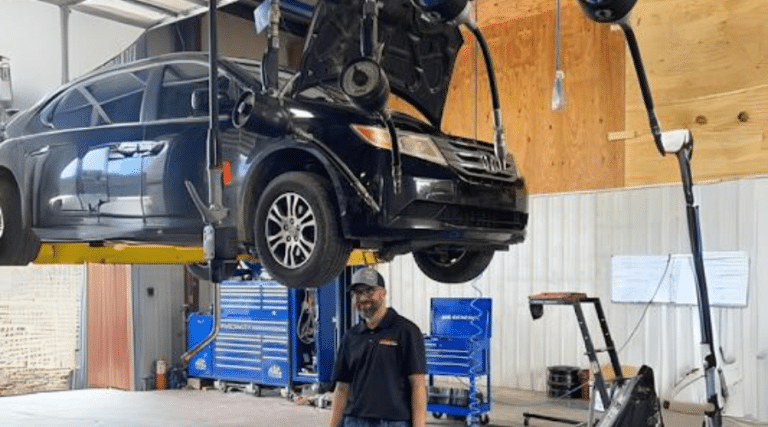All Categories
Featured
Your car's brakes are among the most critical elements in guaranteeing your safety and the safety and security of others when traveling. Regular brake examinations are essential to maintaining ideal braking performance and preventing costly repairs. Whether you're a seasoned vehicle owner or a brand-new chauffeur, recognizing brake evaluation standards can help you stay proactive regarding maintenance and guarantee your car is constantly roadworthy.
- Why Brake Inspections Issue. The more you drive, the more friction your brake pads withstand, at some point leading to reduced stopping performance. Without correct assessment, it's tough to evaluate when your brakes may be in demand of repair work.
A well-kept brake system makes certain quick, responsive stopping power, especially in emergencies. It additionally aids prolong the life of your automobile, as disregarding brake upkeep can bring about more serious, costly troubles later on.
- Indicators You Need a Brake Inspection. While it's important to have your brakes examined periodically, specific indications may show that they require interest. Keep an eye (and ear) out for these caution signals:
Squealing or Grinding Sounds: Uncommon sounds, especially a piercing screech or grinding noise, commonly mean that your brake pads are used down. Resonance or Pulsation: If you really feel resonances or a pulsing experience when pushing the brake pedal, maybe an indicator of distorted blades or irregular brake pad wear. Decreased Brake Responsiveness: If your brakes feel much less receptive or you need to press the pedal harder to slow down, it might suggest air in the brake lines or reduced brake liquid. Pulling to One Side: If your car pulls away when braking, it could indicate unequal brake pad wear or a brake fluid leak. Dashboard Caution Lights: Some automobiles have brake-related caution lights that indicate concerns like reduced brake liquid or used brake components. If you notice any of these symptoms, it's important to have a professional mechanic perform a brake evaluation asap.

- What Takes place During a Brake Evaluation? During a brake examination, a mechanic will examine several vital elements of the braking system to guarantee everything remains in working order. Right here's what you can expect throughout the process:
Brake Pads and Shoes: The auto mechanic will examine the density of the brake pads or shoes. If they're also slim, they'll require to be replaced. Brake Rotors: Rotors are the discs that the brake pads press against to reduce your auto down. They'll be looked for any indications of wear, racking up, or warping. Brake Fluid: Low or contaminated brake liquid can hinder stopping performance. The service technician will check the fluid level and top quality and top it up or purge it if required. Brake Lines and Pipes: Brake lines carry fluid from the master cylinder to the brakes. The mechanic will look for any kind of leakages, splits, or damages to make sure correct fluid circulation. Brake Calipers and Wheel Cyndrical Tubes: Calipers and wheel cylinders press the brake pads against the rotors or drums. The service technician will certainly look for wear, leakages, and appropriate operation. 4. How Typically Should You Have Your Brakes Evaluated? The regularity of brake inspections relies on factors like your driving behaviors, the kind of car you drive, and the environment in which you drive. As a basic guideline, it's an excellent concept to have your brakes inspected every 12,000 miles or yearly. If you experience any of the warning indications stated earlier, it's vital to obtain your brakes examined promptly.
For those who often drive in rush hour, hilly terrain, or rough weather, even more regular assessments may be essential.
- Value of Timely Brake Repair Works. When you discover an issue with your brakes, it's vital to resolve it as soon as possible. Postponing brake fixings can bring about even more substantial damages to your braking system, resulting in higher repair work prices. In extreme cases, neglecting brake issues can lead to complete brake failing, which is a significant security threat.
By remaining on top of brake upkeep and attending to concerns immediately, you make sure that your brakes continue to carry out as intended, keeping you and your travelers secure when traveling.
Conclusion: Maintain Your Brakes in Top Shape. Brake evaluations are an easy yet essential part of vehicle upkeep. By understanding the importance of routine assessments, understanding the indicators of brake concerns, and staying proactive with repair work, you can ensure your vehicle's braking system stays in optimal problem. Routine brake checks provide comfort, understanding that your vehicle prepares to respond when you require it most. Prioritize brake upkeep-- your safety and security depends on it.
Latest Posts
Why Consistent Car Maintenance at Montclare Auto Repair Saves You Money
Smooth Light Weight Aluminum Gutters: The Smart Option for Your Home
Explore Top Car Repair Solutions at Montclare Auto Repair – Drive with Confidence
More
Latest Posts
Why Consistent Car Maintenance at Montclare Auto Repair Saves You Money
Smooth Light Weight Aluminum Gutters: The Smart Option for Your Home
Explore Top Car Repair Solutions at Montclare Auto Repair – Drive with Confidence
